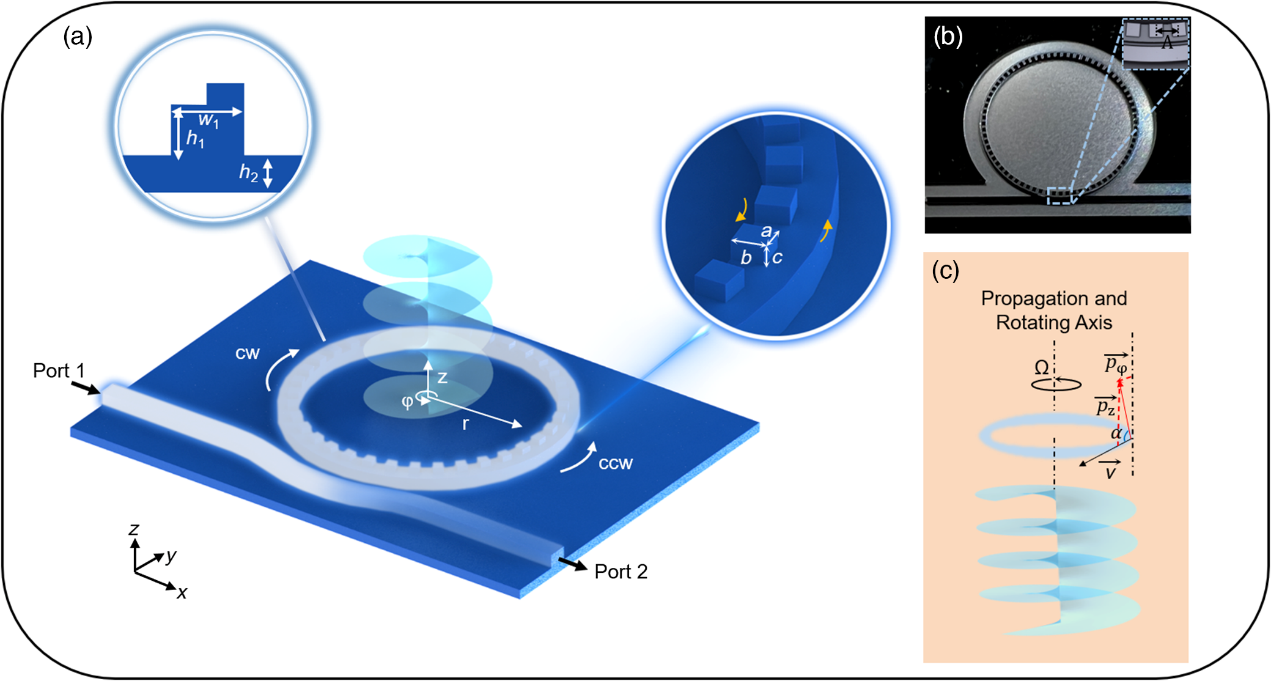Recently, under the guidance of Academician Zhuang Songlin, the Terahertz Technology Innovation team of the School of Optoelectronics at the University of Shanghai for Science and Technology has proposed for the first time a new integrated terahertz vortex emitter and uses vortex electromagnetic waves with orbital angular momentum (OAM) to detect the speed of the target. The device can tune frequencies and excite OAM beams with different topological charges. The research team used the combined detection method of positive and negative topological charges to realize the identification and detection of rotating Doppler effect in micro-Doppler interference signals. The research results were published in the Advanced journal "Integrated terahertz vortex beam emitter for rotating target detection. Associate Professor Xie Jingya is the first author of the Photonics journal (IF=17.3, Region 1). Corresponding authors are Prof. Linjie Zhou from Shanghai Jiao Tong University and Prof. Yiming Zhu from Shanghai University of Science and Technology.
Terahertz is in the emerging electromagnetic wave band, with good penetration, can take into account the advantages of small main lobe diameter in the optical domain, not easily affected by electromagnetic interference, and can directly process the echo signal in the microwave band. The Doppler effect is ubiquitous in our lives, from tracking a car's speed with radar to locating a satellite in the sky, and at its heart is how waves change their frequency as the source and detector move relative to each other. However, conventional radar systems have run into obstacles when trying to detect objects moving at right angles to the radar signal. The rotating Doppler effect of vortex electromagnetic wave carrying OAM can effectively solve the blind spot detection problem of traditional radar's diagonal motion trend perception.
The research team has proposed a tunable terahertz vortex emitter that can excite a vortex beam with a ±1 topological charge by manipulating the frequency. These vortex beams are then illuminated on the rotating object, and the resulting echoes are received directly by the linearly polarized antenna, simplifying the detection process and improving the overall efficiency. Through the effective identification and detection of the rotating Doppler effect in the spectrum, the rotation speed of the object can be accurately quantified, and the maximum error margin is only about 2%. In addition, by etching a new second-order grating on the top part of the waveguide to control the lateral spin states, the problem of double circular polarization superposition caused by the high refractive index contrast of the device is effectively solved, so that a single circular polarization scalar vortex light can be obtained, making the device well suited for rotation velocity detection in the terahertz frequency range. Compared with other methods of generating multi-topologically charged vortex beams in the existing terahertz frequency band, the integrated terahertz vortex emitter has strong adjustable ability, simple optical path construction process, easy to scale up, easy to be disturbed, and good stability.
Due to the compact size of the integrated device, the low cost and the potential for mass production, the method is expected to be put into use in future terahertz radar target detection and countermeasures systems.

Article link:
https://doi.org/10.1117/1.AP.5.6.066002